“Photography seems to come natural for the ophthalmologist. It is highly visual, detailed and technical and can engage an ophthalmologist’s passion for equipment and gadgets.”
These are the words of Dr. E. Michael Van Buskirk, whose career as an ophthalmologist and as a photographer have embodied many unique forms of imaging. Few individuals have excelled as he has in two distinct careers.
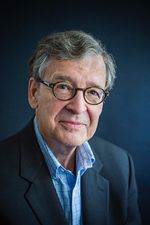
E. Michael Van Buskirk, MD
Dr. Van Buskirk will go down in the annals of ophthalmic history as a leader in the field of glaucoma during the second half of the 20th century. He graduated cum laude from Harvard, where he also earned a master’s degree in anthropology, obtained his medical degree and completed his ophthalmology residency at Boston University. He then returned to Harvard, where he pursued a two-year glaucoma fellowship with the late Dr. Morton Grant in the Howe Laboratory of Ophthalmology at Massachusetts Eye and Ear.
After completing his distinguished education, Dr. Van Buskirk took his first academic position at the Hershey Medical Center of Pennsylvania State University. Five years later, he moved to Portland, Ore., and joined the faculty of the Oregon Health Sciences University, where he established the glaucoma service and rose through the ranks to become professor and vice chair of the department. In 1990, he became Chief of Ophthalmology and Director of Portland’s Devers Eye Institute and served in that capacity until his retirement in 2004.
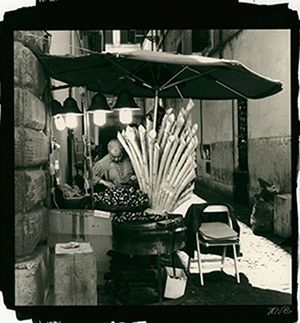
At Devers, he spearheaded the establishment of Discoveries in Sight, the research arm of the institute. It now supports six principal investigators and their research staff. Dr. Van Buskirk also served as founding editor of the Journal of Glaucoma and was a founding member of the American Glaucoma Society, where he served as president in 1998-99. During his ophthalmology career, he published over 160 scientific papers, over 200 original articles, editorials and book chapters and five books. Dr. Van Buskirk is the recipient of numerous honors and awards. In 2001, the Good Samaritan Foundation established the Van Buskirk Chair for Ocular Research at Devers.
Among his seminal contributions to our understanding of glaucoma is a technique for imaging ocular vessels, in which he created extremely tiny plastic tubes – as fine as the finest suture – to cannulate fine vessels on the surface of autopsy eyes and inject methacrylate into their lumens. He then removed the tissue, leaving an intra-luminal casting of vessels down to the finest capillaries, which he imaged with scanning electron microscopy. With this procedure, Dr. Van Buskirk advanced our knowledge of ocular blood flow, especially in the ciliary body with its relationship to aqueous humor production.
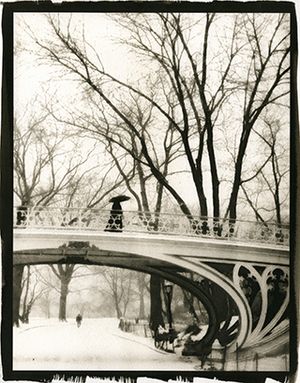
After retiring from Devers Eye Institute in 2004, Dr. Van Buskirk went on to teach residents and fellows until 2012. When asked what he tends to reminisce about the most in ophthalmology, his response is, “The group of residents and fellows I have trained and may have influenced.” He trained well over 75 clinical and research fellows in glaucoma who have gone on to practice, study and teach on five continents and who would undoubtedly attest to the influence he has had on their careers and lives.
This retirement was in name only. It was just a transition to another chapter in his life, and the interweaving of his two lifetime interests was so seamless, it was hard to tell where one stopped and the other began. His passion for photographic printing began in 1950, when he received his first camera, an Argus 35mm, and began printing his own pictures in a basement darkroom. He continued his photographic interests through medical school but set it aside when his commitment to patient care, research and his many administrative responsibilities took precedent. With his retirement from ophthalmology, his return to photography and techniques of photographic printing was a natural transition.
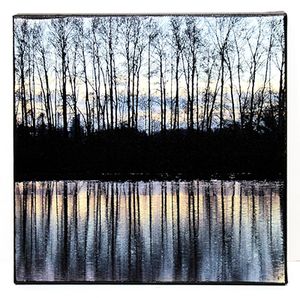
The techniques of digital imaging that Dr. Van Buskirk had learned and used in his ophthalmic career influenced the next chapter in his life. While taking courses in digital image manipulation, he discovered that he could mimic the hallowed platinum prints of the early 20th century. He set out to learn the old handcrafted technique of bygone times, now using digitally printed large scale negatives instead of the old 8x10 large format cameras. He found space in Portland’s historic Union Station, where he established a photographic studio called Gallery Obscura.
“Part of the appeal of printing in platinum,” Dr. Van Buskirk explained, “is that the print derives from the precipitation of elemental platinum metal into the substrate, typically a heavyweight watercolor rag paper, rather than from an emulsion on the surface.” The artistic eye of the photographer combined with his background in research, helped with the quantitative chemical manipulation of metallic compounds, led to unique works of art that he exhibited in various shows and galleries around the country for the next 10 years. His work earned him many awards. More recently, he has experimented with techniques to print in platinum on other absorbent surfaces, such as wood and canvas.
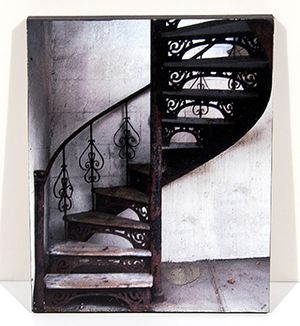
After a decade in his studio, a real estate developer bought the old building and converted it into offices and condos, leading Dr. Van Buskirk to find a new printing method that could be achieved in a makeshift closet studio of his Portland condominium, where he lives with his wife, Bette. As he describes it, “The process involves printing a digital image on a large-scale transparent transfer medium, laying it face down on stretched canvas specially treated to accept the image and carefully peeling the medium away from the thin image layer. Steady and patient hands of the eye surgeon facilitate this maneuver.”
Dr. Van Buskirk’s mind is far too active to be limited to even his photography. He and Bette also have a cottage in Seaview, Wash., where he enjoys his other lifelong interest in trains by trying to squeeze one more rail line to his eight or so currently running. He also enjoys lamp-building, woodworking and writing. He has recently published a book titled, The Van Buskirks of Indiana, which chronicles his family’s western migration from the Dutch colony of New Netherlands in New York across North America. He has now completed another nonfiction narrative book, in press for 2019, about body snatching for anatomic dissection in the 19th century Midwest.
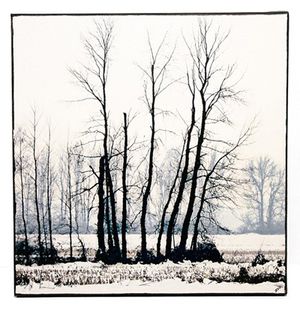
Despite his many passions and interests, Mike Van Buskirk’s greatest pleasure is undoubtedly the life that he and Bette enjoy in the Northwest with the families of their three daughters, including 10 grandchildren.
Dr. Van Buskirk’s photographic work can be found at www.galleryobscura.com and www.platinumprints.org.